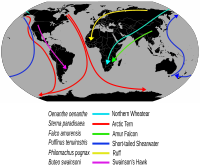
Photo from wikipedia
ABSTRACT Leucine, isoleucine and valine are essential aminoacids termed branched‐chain amino acids (BCAA) due to its aliphatic side‐chain. In several pathological and physiological conditions increased BCAA plasma concentrations have been… Click to show full abstract
ABSTRACT Leucine, isoleucine and valine are essential aminoacids termed branched‐chain amino acids (BCAA) due to its aliphatic side‐chain. In several pathological and physiological conditions increased BCAA plasma concentrations have been described. Elevated BCAA levels predict insulin resistance development. Moreover, BCAA levels higher than 2 mmol/L are neurotoxic by inducing microglial activation in maple syrup urine disease. However, there are no studies about the direct effects of BCAA in circulating cells. We have explored whether BCAA could promote oxidative stress and pro‐inflammatory status in peripheral blood mononuclear cells (PBMCs) obtained from healthy donors. In cultured PBMCs, 10 mmol/L BCAA increased the production of reactive oxygen species (ROS) via both NADPH oxidase and the mitochondria, and activated Akt‐mTOR signalling. By using several inhibitors and activators of these molecular pathways we have described that mTOR activation by BCAA is linked to ROS production and mitochondrial dysfunction. BCAA stimulated the activation of the redox‐sensitive transcription factor NF‐&kgr;B, which resulted in the release of pro‐inflammatory molecules, such as interleukin‐6, tumor necrosis factor‐&agr;, intracellular adhesion molecule‐1 or CD40L, and the migration of PBMCs. In conclusion, elevated BCAA blood levels can promote the activation of circulating PBMCs, by a mechanism that involving ROS production and NF‐&kgr;B pathway activation. These data suggest that high concentrations of BCAA could exert deleterious effects on circulating blood cells and therefore contribute to the pro‐inflammatory and oxidative status observed in several pathophysiological conditions. HIGHLIGHTSHigh BCAA concentration induces ROS generation and mitochondrial dysfunction in PBMCs.High BCAA concentration promotes the activation of NF‐&kgr;B favoring the expression of cytokines and adhesion molecules and PBMCs migration.The pro‐oxidant and pro‐inflammatory actions of BCAA are mediated by the Akt‐mTORC1 axis.
Journal Title: Free Radical Biology and Medicine
Year Published: 2017
Link to full text (if available)
Share on Social Media: Sign Up to like & get
recommendations!